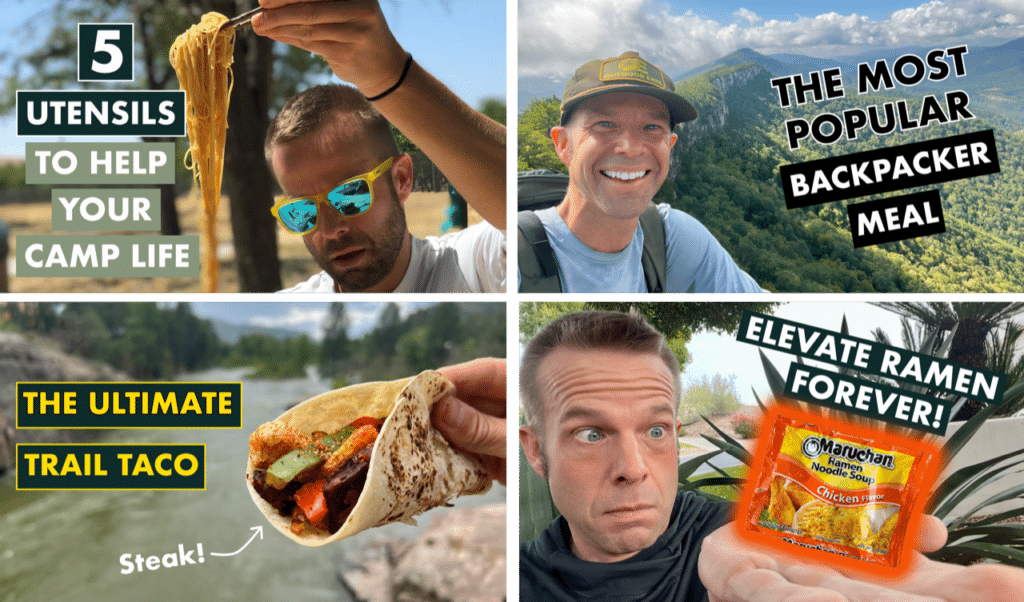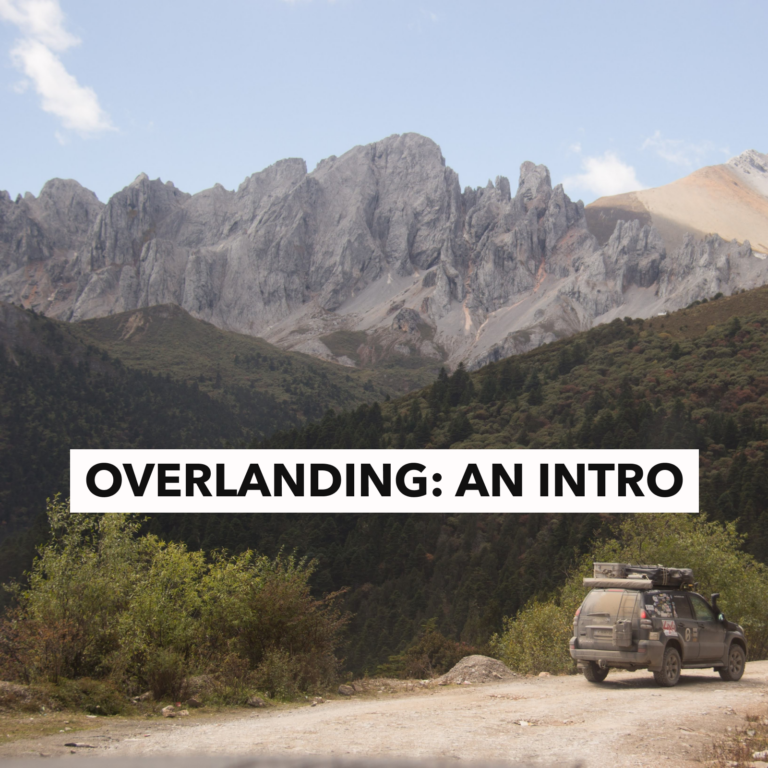
Overlanding: An Intro
By Ferenc Elekes
For this article, we are excited to partner with Ferenc Elekes,
founder of OVERLAND SITE.
A great resource for all things Overlanding.
Overland travel can be deeply fulfilling and rewarding. There is so much of the earth to see that you miss when traveling by air, making overlanding a growing travel trend that’s showing no signs of stopping. Understanding overlanding and finding the best routes, tips and strategies to make the best of your overland adventures will give you the tools you need to enjoy a moving (no pun intended) experience.
First things first.
What is Overlanding
Overlanding refers to travel that takes place in a motorised vehicle over roads instead of by air or sea. Overlanding is most often used to describe travel in a passenger car or truck. Overland travelers tend to prefer rural and sparsely populated areas to big cities. They prefer taking the scenic route along leafy country roads, often even off-road, past majestic mountains and alongside sparkling waters hugging the coast.
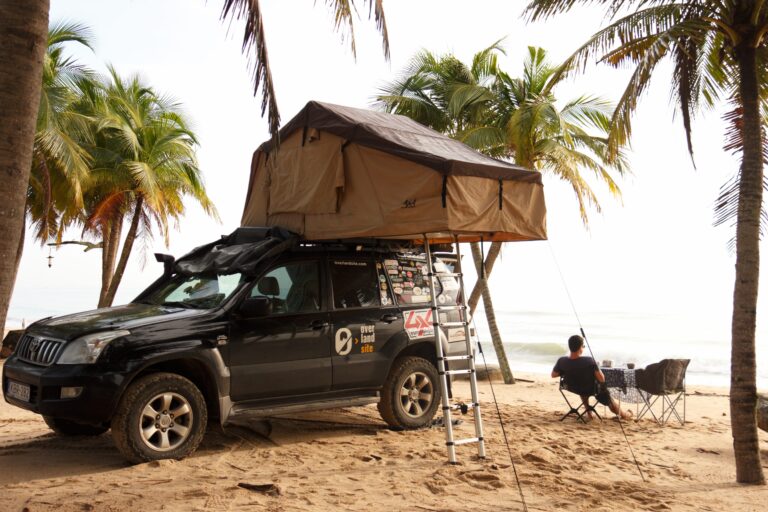
Overland Travel vs. Road Trips vs. Off-Roading
While some people think of overland travel as a form of road trip, there is a major difference between the two. On a road trip, the destination is the main goal of the trip, with the scenery in between an added bonus. With overland travel, the journey itself is the destination.
Off-roading is a bit different than overlanding. While the travel does take place over roads, off-roading is more of a specific type of adventure travel where the focus is on driving over rough terrain for thrills. Overlanders often drive through rough terrain, but only because it is necessary to access the scenery they are seeking. They’re not necessarily getting their kicks from taking a 4×4 up a steep hill, it’s often just a means to an end.
Overlanding is growing in popularity, with singles, couples and families investing in serious gear like off-road vehicles, converted school buses (also called ‘skoolies’), travel vans and RVs taking to the road for months, weeks or even years at a time. Overlanding allows travelers to see all of what a geographic area has to offer. Some of the most serious overlanders have traversed entire countries and continents without ever setting foot on an airplane.
While some people have an image of the overlander as someone living the nomadic, off-grid life, setting fires to cook food by the side of the road, today’s overlander can run the gamut of travel styles. There are some overlanders who have outfitted their vehicles with Internet access so that they can work while on the road. Others homeschool their children while traveling, while some spend weeks at a time living at campgrounds. Overland travel can take many forms, and more people are discovering the joy and wonder of making the journey the focus.
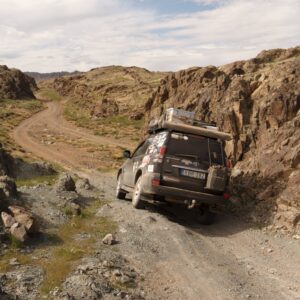
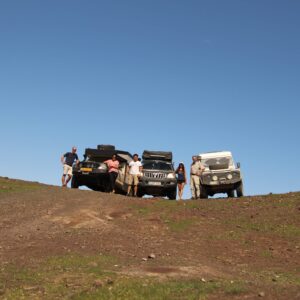
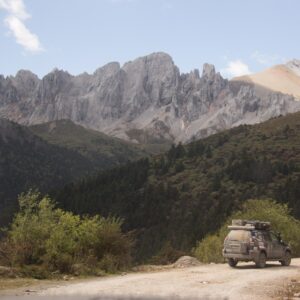
Popular Overland Routes
The Mecca: Pilgrimage to the National Parks, Utah
One of the most popular overland routes snakes through the Mighty Five national parks in Utah, winding through Moab, St. George and surrounding towns. The red rock formations, hoodoos and canyons make this route an outdoor-lovers dream, and it is one of the most popular among overland enthusiasts. It is also one of the shortest routes, covering only one state while packing a punch in terms of scenic beauty.
The Classic:
The Pan-American Highway
Stretching for an impressive 19,000 miles, the Pan-American Highway takes you from Prudhoe Bay, the northernmost point in Alaska to Ushuaia, the southernmost tip of South America. With the exception of an area of thick rainforest in Colombia, this route connects coastal points through a series of interconnected highways. This route takes you past a diverse array of terrain that is a feast for the senses. Glaciers, dense jungles, cities, arid desert and rainforests. The highway snakes down from Alaska down the Pacific coast of the United States, into Mexico and winding down through South America before ending at Ushuaia.
The Classic:
The Pan-American Highway
Stretching for an impressive 19,000 miles, the Pan-American Highway takes you from Prudhoe Bay, the northernmost point in Alaska to Ushuaia, the southernmost tip of South America. With the exception of an area of thick rainforest in Colombia, this route connects coastal points through a series of interconnected highways. This route takes you past a diverse array of terrain that is a feast for the senses. Glaciers, dense jungles, cities, arid desert and rainforests. The highway snakes down from Alaska down the Pacific coast of the United States, into Mexico and winding down through South America before ending at Ushuaia.
Nature’s Lightshow:
The Dalton Highway, Alaska
One of the more challenging routes, the Dalton Highways takes you through the Yukon Territory and into the Alaskan tundra and bush. Popularized by the tv show, “Ice Road Truckers,” this highway takes you past glaciers, under the starry Alaskan sky and gives you a front row seat to the natural fireworks that are the Northern Lights. This route, however, is not for the novice driver. There are typically hundreds of miles between gas stations, and steep cliff faces and sheer drop offs make it a treacherous trek.
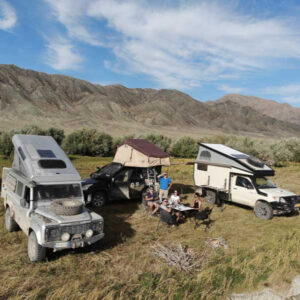

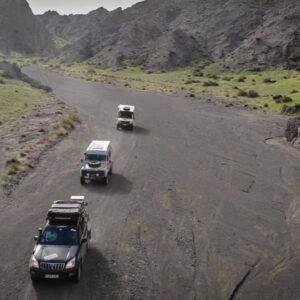
Gear Requirements
Overlanding requires the right gear. There are several types of vehicles that are suitable for this kind of travel, but the most common factor in the vehicle you choose is drive train. Four-wheel drive vehicles are the preferred choice, but again, there is variation in the type of vehicle that can make the trek. Vans, campers, converted school buses and off-road vehicles are some of the most popular among overlanders.
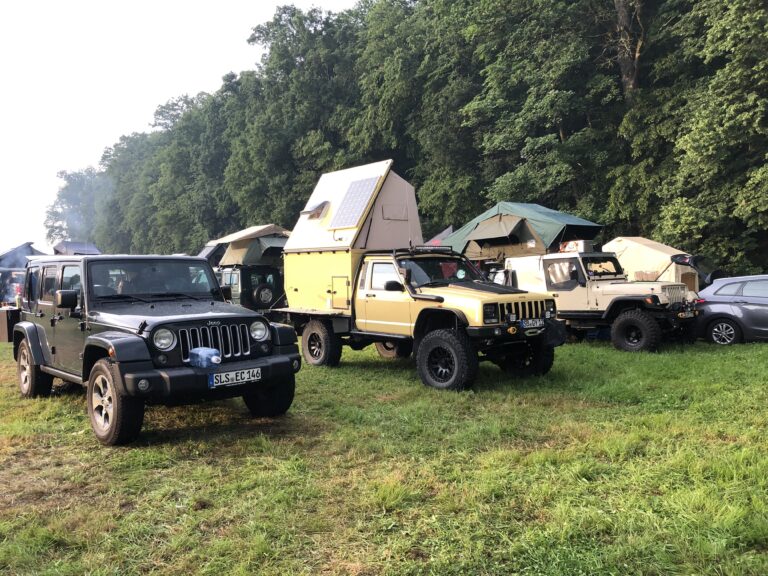
Essential Gear
While the gear you carry in your vehicle, or rig, will vary, there are some general must-haves for the overland journey. They include:
First Aid equipment
Flashlights, flares and emergency repair equipment
Fire extinguishers – Shovels
Tire repair kit – Full-size spare tire(s)
Camping equipment (tents, chairs, camping stoves, cooler or 12-volt fridge)
A spare key hidden on the outside of the vehicle
Power inverter – GPS navigation
Extra food and water supplies
Many overlanders equip their vehicles with a full set up of furnishings to make it possible for them to live in the vehicle without depending on stopping for paid lodging. Overlanders often build entire kitchen galleys that come with everything they need for cooking while traveling. Some of the vehicles have full beds, tables, chairs and bathrooms that make it easy for them to live for months at a time in their vehicles.
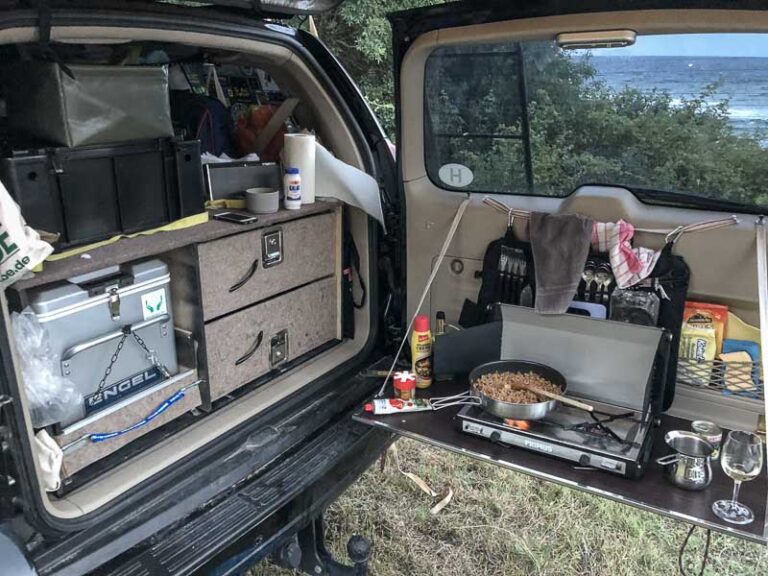
Dealing with Waste While Overlanding
Because most overlanders are, by nature, lovers of the outdoors, they take extra steps to ensure that they keep their carbon footprint small during their travel.
Ditch single use plastics, straws and coffee cups to do your part to protect the environment. Many overlanders find that it is often challenging to find waste receptacles along the route, so single use plastics are not only harmful to the environment but impractical. There may be long stretches of time between stops, so keeping waste products stored properly until they can be disposed of is crucial. For organic waste like food peelings, many travelers simply compost them and return them to the earth.
Have your rig inspected periodically and keep it in good shape so that it does not cause unnecessary damage to the environment. This means having it checked for emissions, making sure your tires are in good working order and making sure there are no leaks that may be spreading dangerous fumes into the atmosphere.
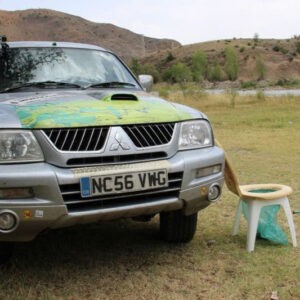
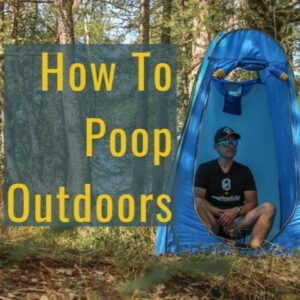
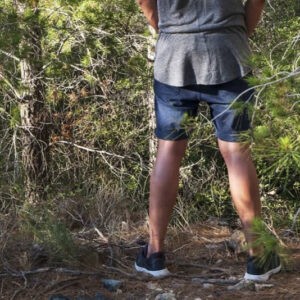
Disposing of Human Waste in the Wilderness
If your rig is not outfitted with a compost toilet, you will have to find ways to dispose of feces without disturbing the ecosystem. The best way to do this is to bury the waste. Dig a hole that is between six and eight inches deep, and at least 200 feet from sources of water so that you don’t contaminate the water supply. In terms of toilet paper, consider using biodegradable or recycled materials. Burn the paper after use.
Considerations for Campervan Toilets
Many overlanders prefer campervan toilets that remain in the rig at all times and bring an added convenience. The biggest benefit of campervan toilets is not having to stop frequently to use public restrooms. Stopping to use the restroom can cause you to lose valuable time on the road, so having a toilet in the rig is a huge bonus in this regard.
A portable toilet does not have to be fancy or even connected to internal plumbing. Compost toilets use biodegradable materials like coconut or mulch to break down solid waste until you can dispose of it. There are other toilets that use a bag system for solid waste, leaving you only the task of dumping the waste periodically.
One of the main drawbacks of in-rig toilets is the overpowering smell of waste inside the rig and the messiness of dumping. If you have to travel long distances with solid waste in your rig, the smell can become distracting and overwhelming. Dumping the toilet can also be messy, making it somewhat unpleasant to deal with.
In the case of overlanders who camp off grid, pooping in the wilderness is often a necessity. In this case, make sure to preserve the environment by burying the waste and making sure not to contaminate any water sources.
For more detailed information about waste in the outdoors, check out my article here.
Start Your Overland Travel Today
There is so much beauty in the country that you will only see from the road. Sweeping vistas, majestic mountains, sparkling lakes and flat prairies are what makes America great. Whether you want to take a short trip in the family’s van or outfit a rig that is fully equipped for long-term road travel, overland travel can be intensely fulfilling and rewarding. Start your overland adventure today.
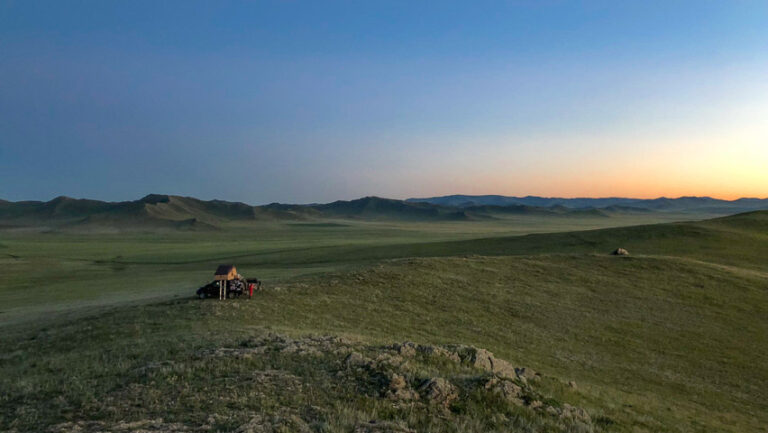
OverlandSite aims to share knowledge and experience by providing expert guides and gear recommendations for anyone interested in overlanding.
Check out more at Overlandsite, on Instagram and on Youtube.
Thanks for coming along!
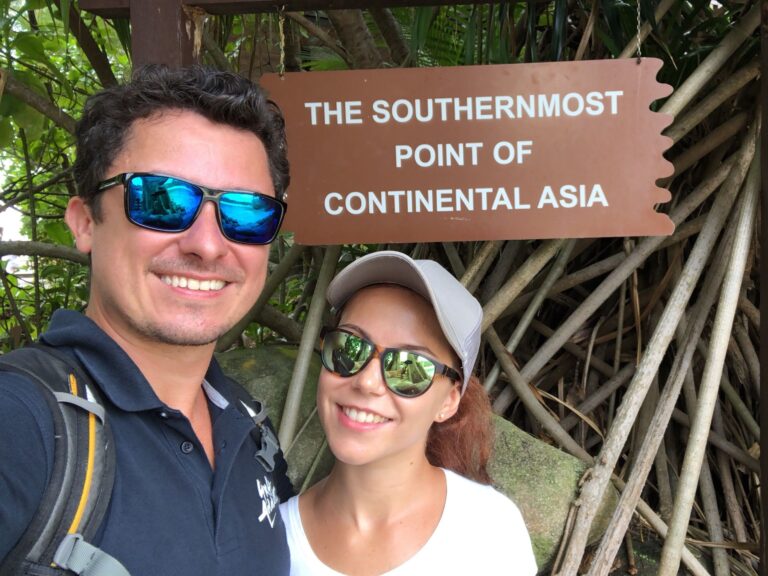
Categorized in: News

